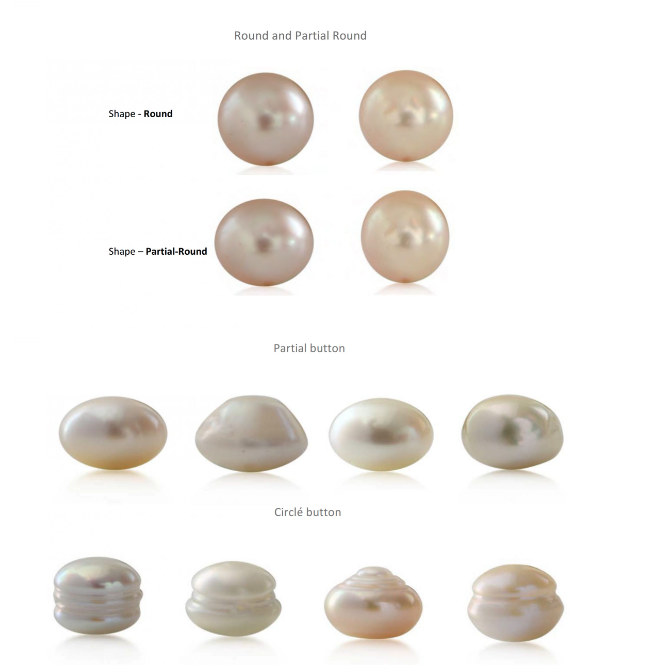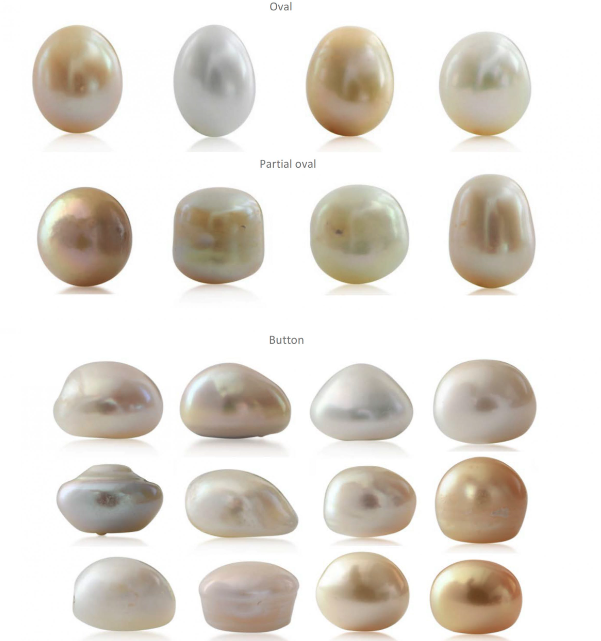
The CIBJO Guide for Classifying Natural Pearls and Cultured Pearls is a 62-page illustrated document that provides an overarching view of natural and cultured pearls, from both seawater and freshwater sources, and highlights the important parameters by which their appearance can be described and assessed in terms of physical dimensions and quality. Compiled by the CIBJO Pearl Commission, it is designed to serve as a reference point and a source of information for both the the general public and the jewelry trade.


llustrations from the CIBJO Guide for Classifying Natural Pearls and Cultured Pearls showing various shapes of cultured pearls.
Complementing the World Jewellery Confederation’s Pearl Blue Book, which is also produced by the Pearl Commission and is considered the authoritative reference for technical standards and nomenclature in the pearl sector, the CIBJO Guide for Classifying Natural Pearls and Cultured Pearls is a primer about pearls tailored for jewellery consumers and pearl lovers, and is designed to serve as an educational tool for the pearl and jewelry trades, and gemmological laboratories.
Providing an overview of the various pearl categories in different parts of the world, the guide lists, describes and illustrates the primary pearl-producing molluscs, and the type of pearls that each yields. A comprehensive breakdown of the leading seawater and freshwater cultured pearl types in the market is provided, detailing the species, origin, characteristics and production of each. The richly illustrated guide details the system for classifying natural pearls from the Akoya complex and the system for classifying cultured pearls, it also supplies information about pearl treatments and other pearl types, such as keshi cultured pearls.
The original draft of this guide was produced by a team of experts at Paspaley Pearling, at the initiative of Nick Paspaley and Peter Bracher. The natural pearl classification sections were conceptualised by the staff of the Gem and Pearl Testing Laboratory of Bahrain (GPTLB), in cooperation with the CIBJO Pearl Commission, and completed by GPTLB’s successor, the Bahrain Institute for Pearls and Gemstones (DANAT).
The following individuals played pivotal roles in the subsequent additions and edits to this guide: Kenneth Scarratt as Editor and President of the CIBJO Pearl Commission, with support from Abeer Tawfeeq, Andrea Broggian, Doug Mclaurin, Elfriede Schwarzer, Fabio Damico, Gerard Grospiron, Gina Latendresse, He Ok Chang, Jacques Branellec, Jacques Christophe Branellec, James Paspaley, Jeanne Lecourt, Jean-Pierre Chalain, Jeremy Norris, Jeremy Shepherd, Justin Hunter, Karina Ratzlaff, Laurent Cartier, Loic Wiart, Margherita Superchi, Nick Paspaley, Nick Sturman, Olivier Segura, Peter Bracher, Pierre Akkelian, Pierre Fallourd, Roland Naftule, Rudi Biehler, Rui Galopim de Carvalho, Shigeru Akamatsu and Tom Moses.
The CIBJO Guide for Classifying Natural Pearls and Cultured Pearls can be downloaded free of charge in English, Japanese, Thai and French. The English-language edition is originally approved, and served as the reference for the translations in other languages.
